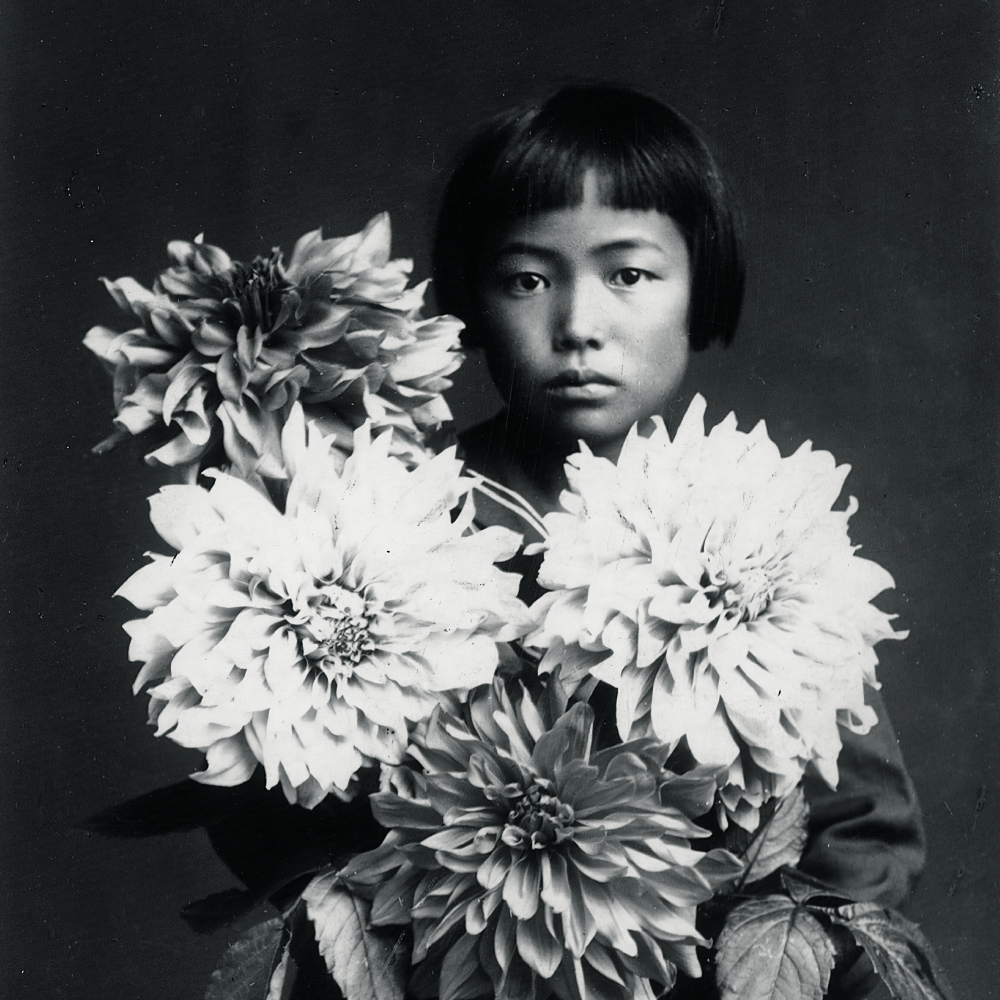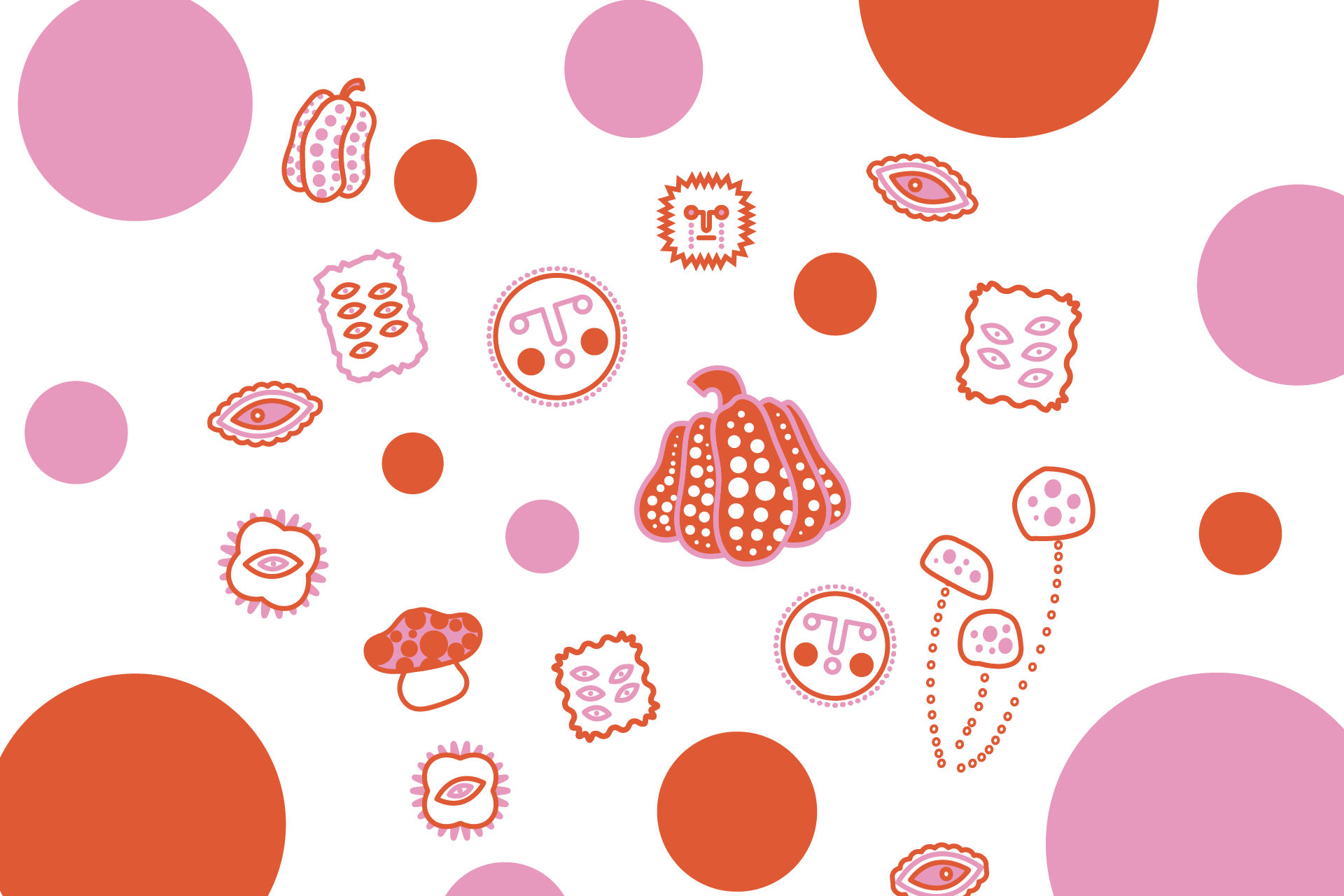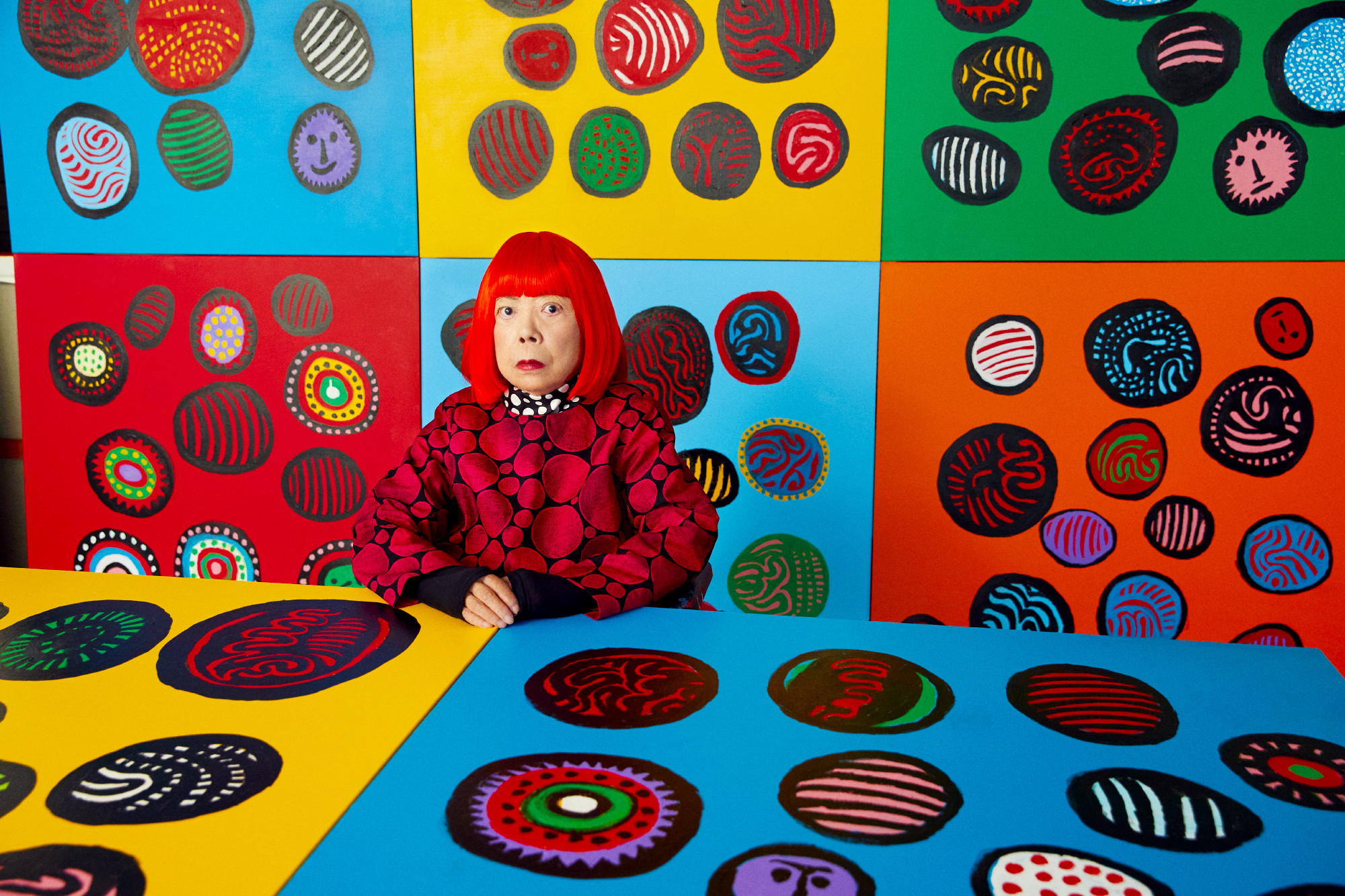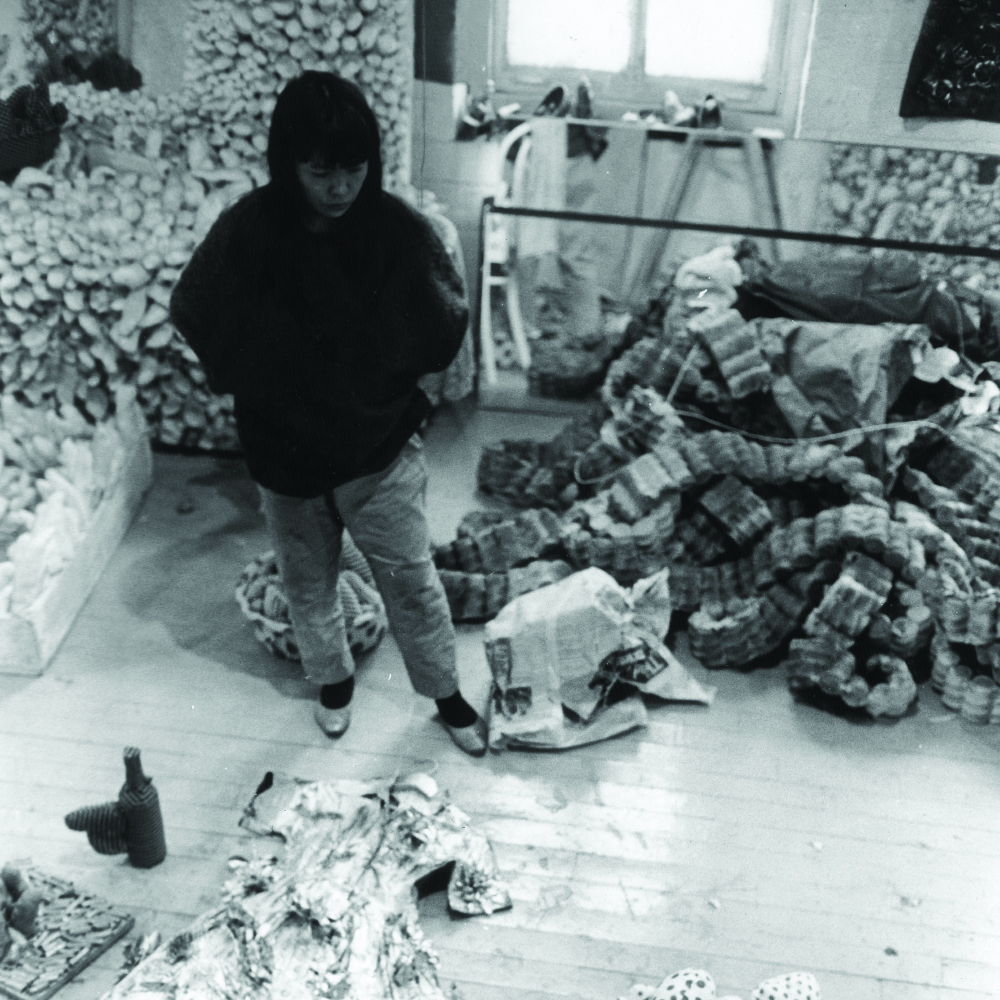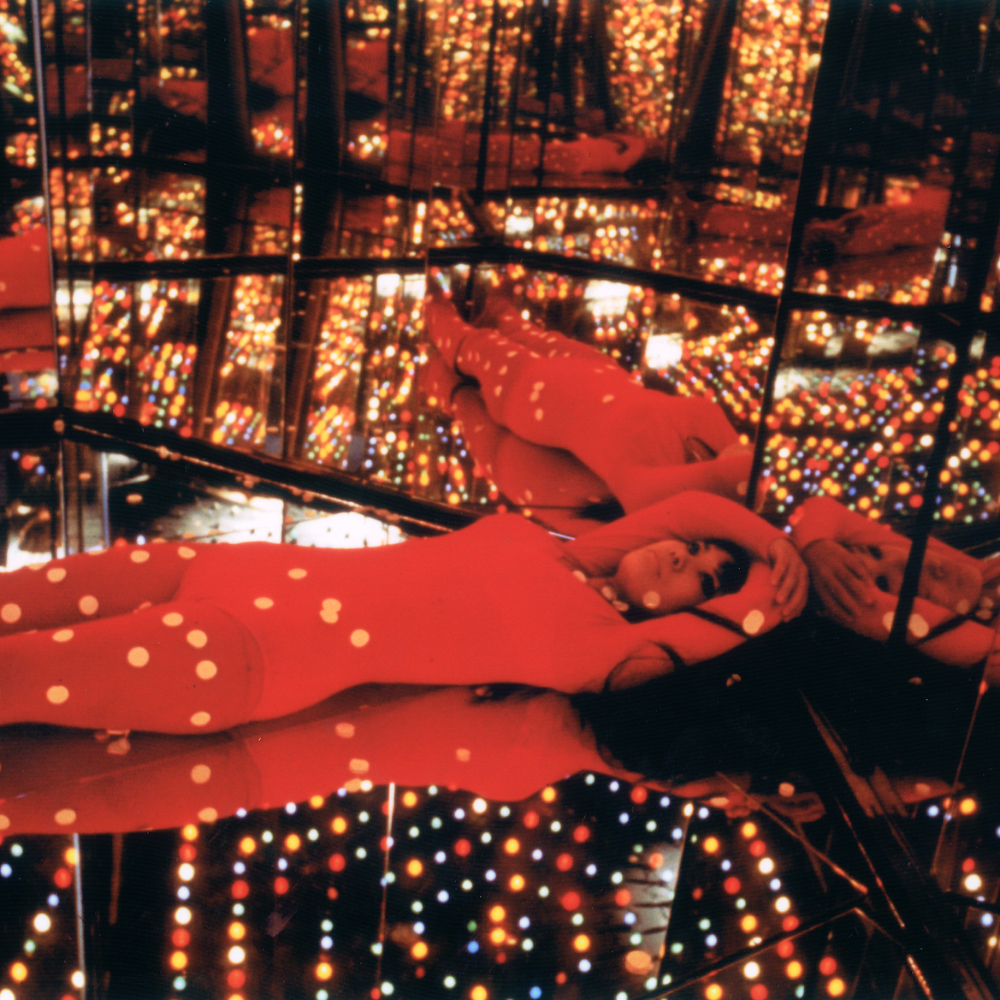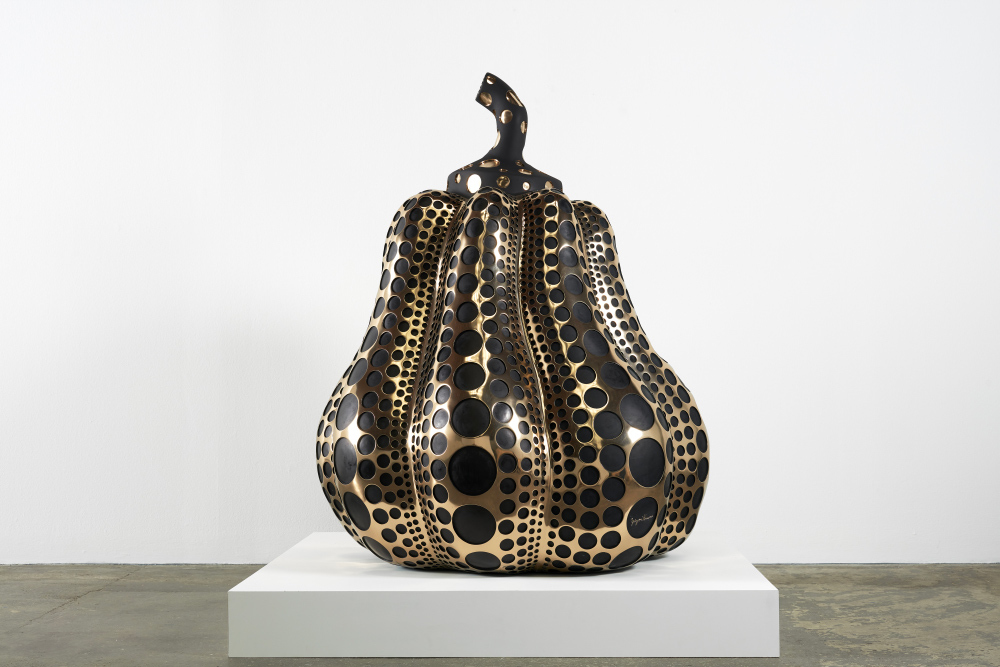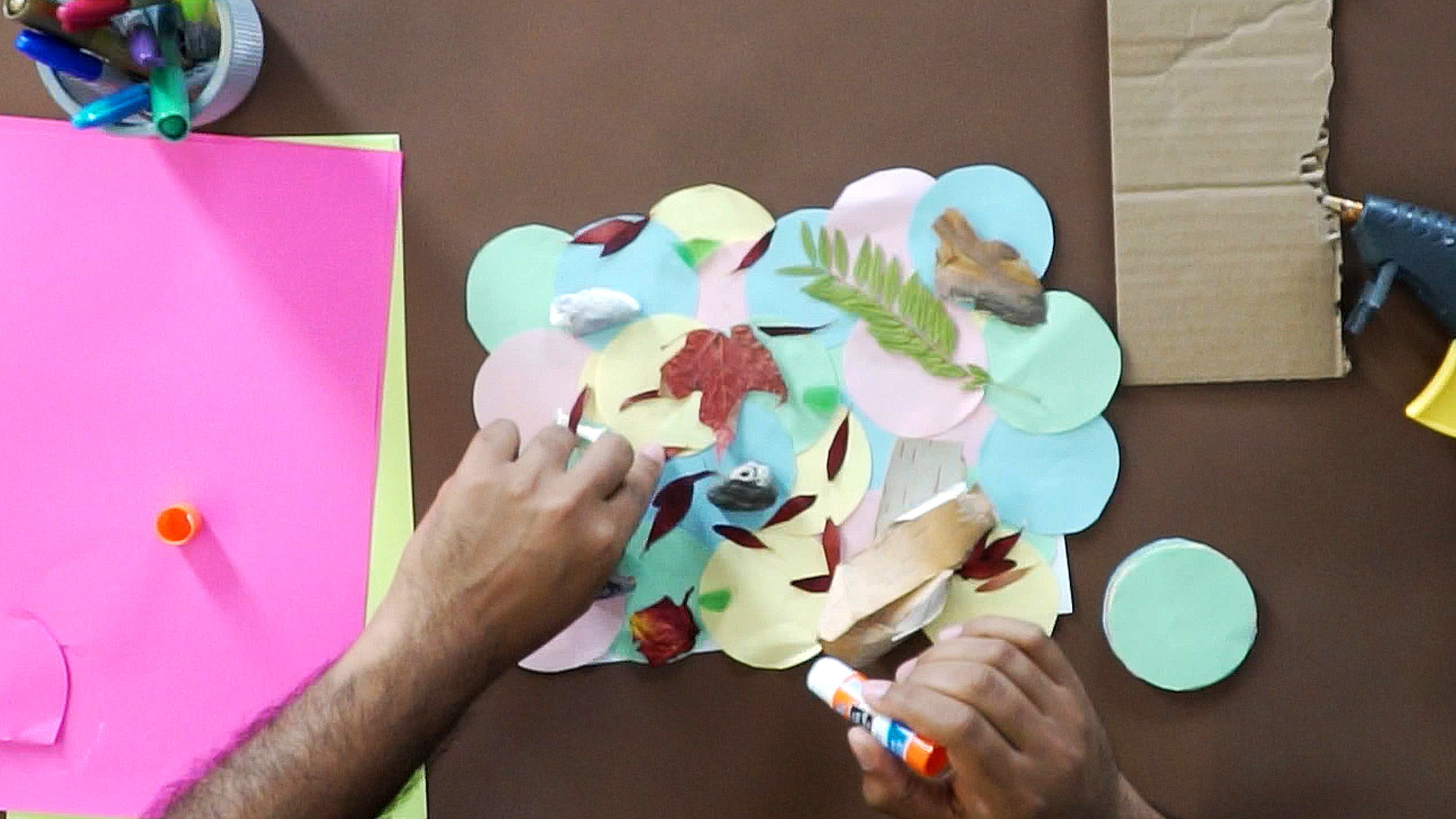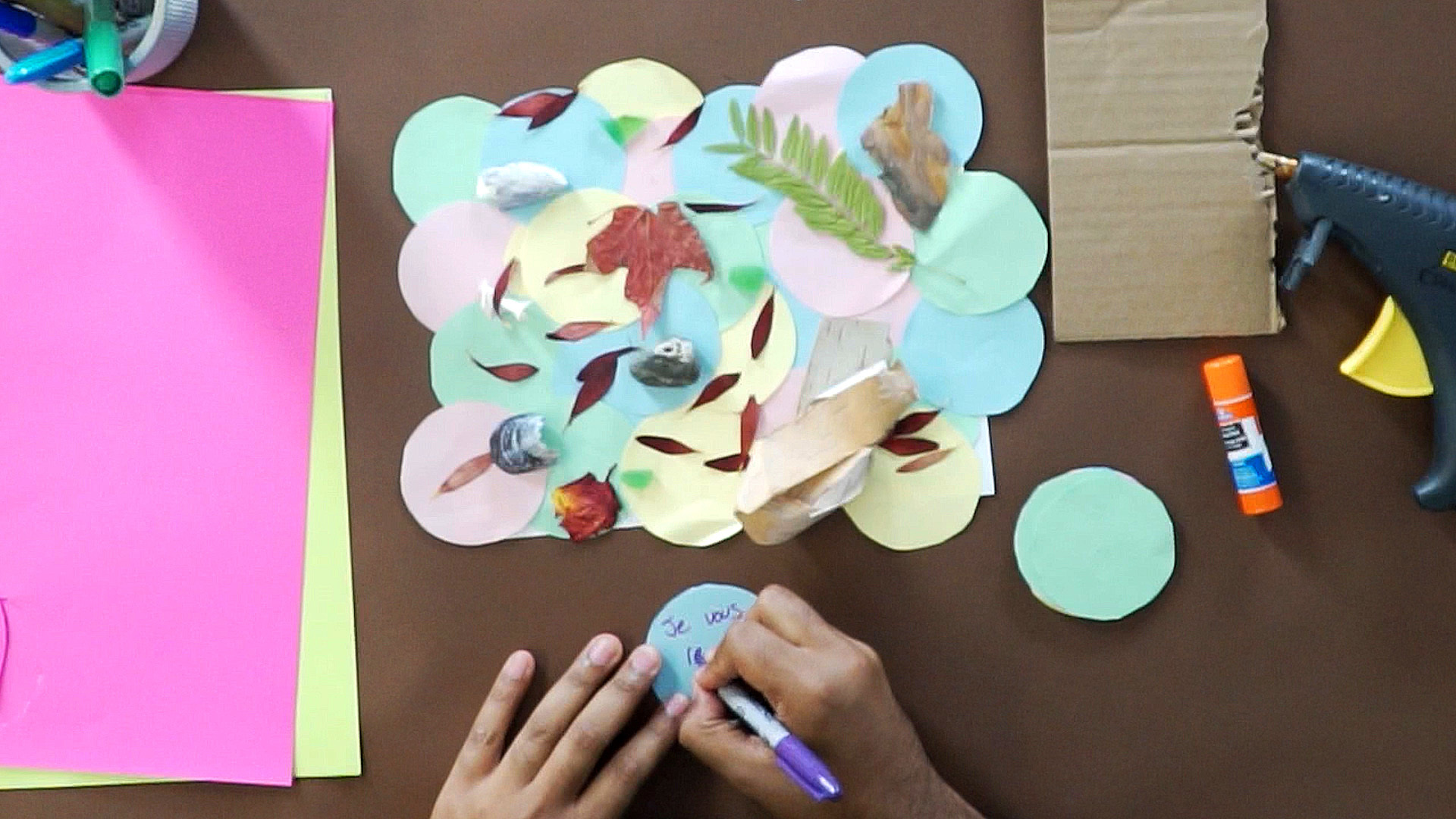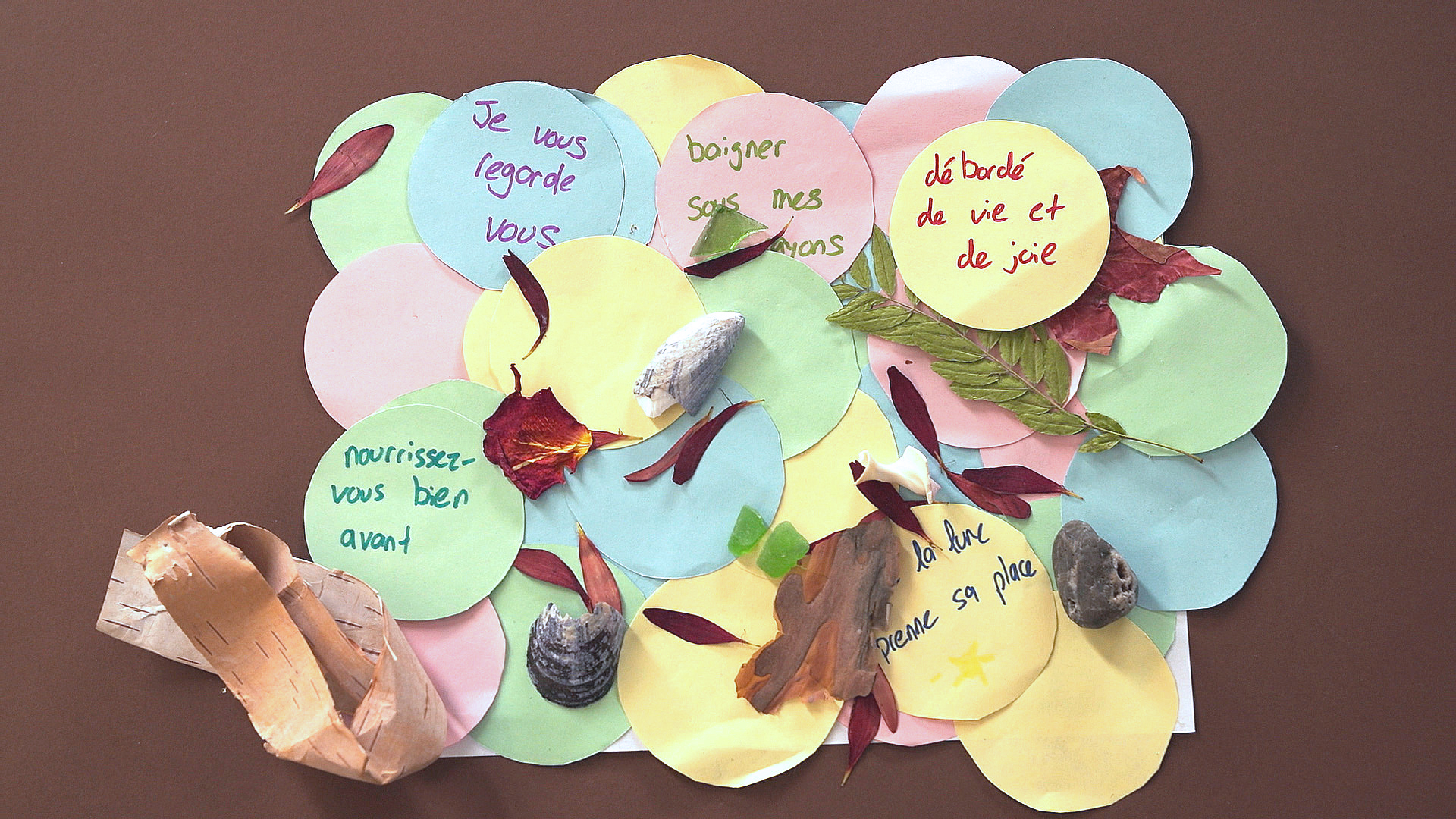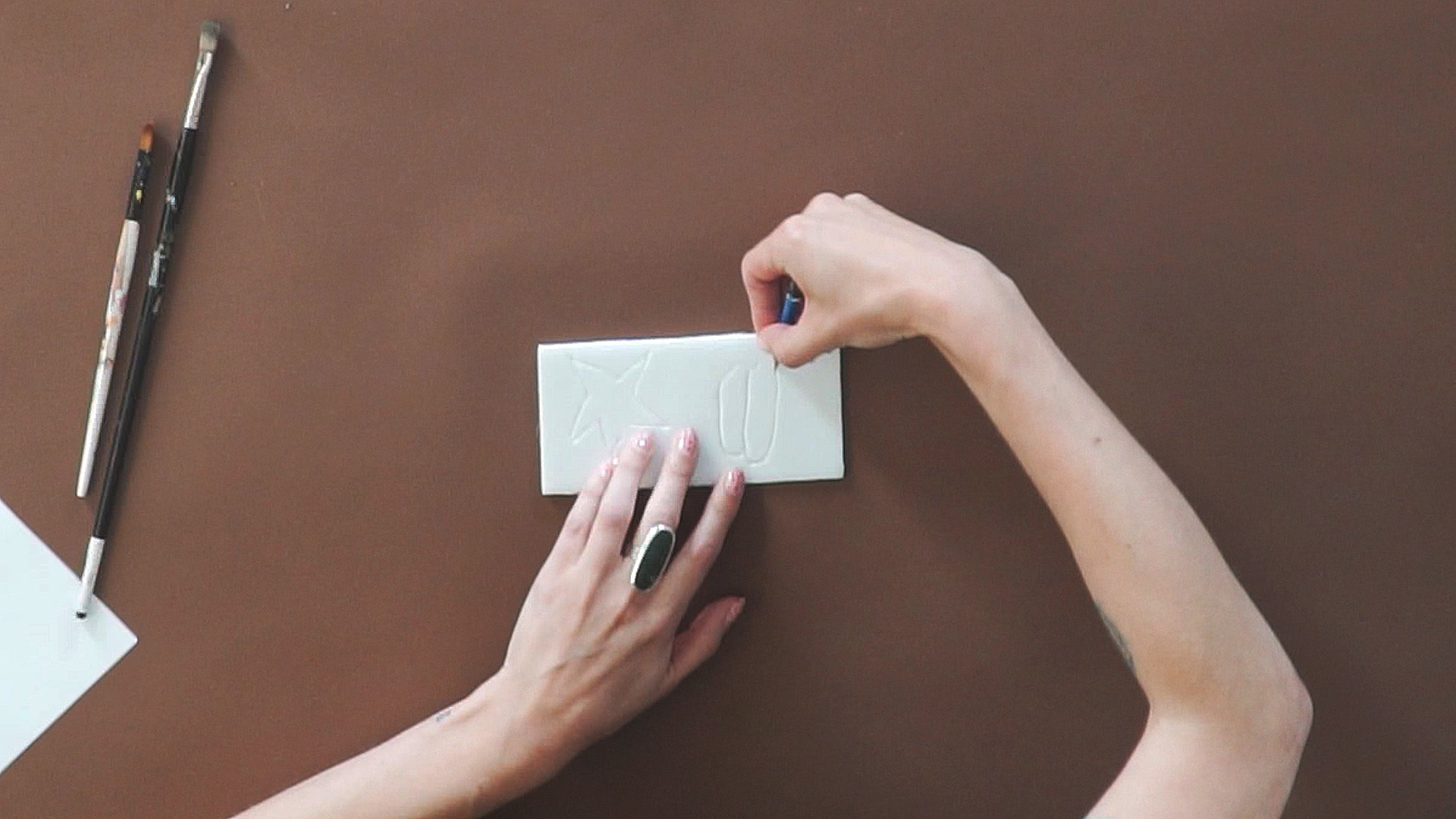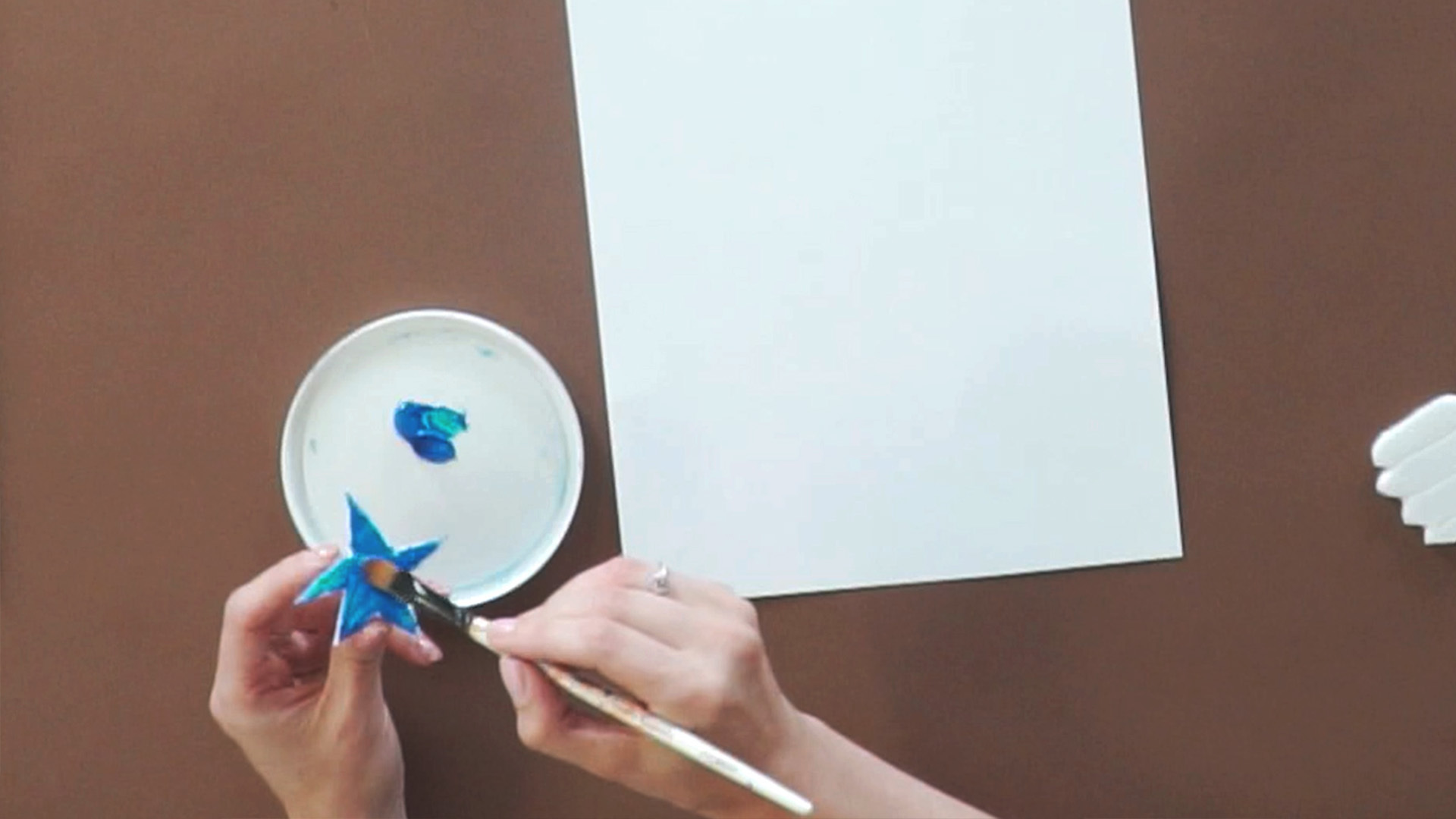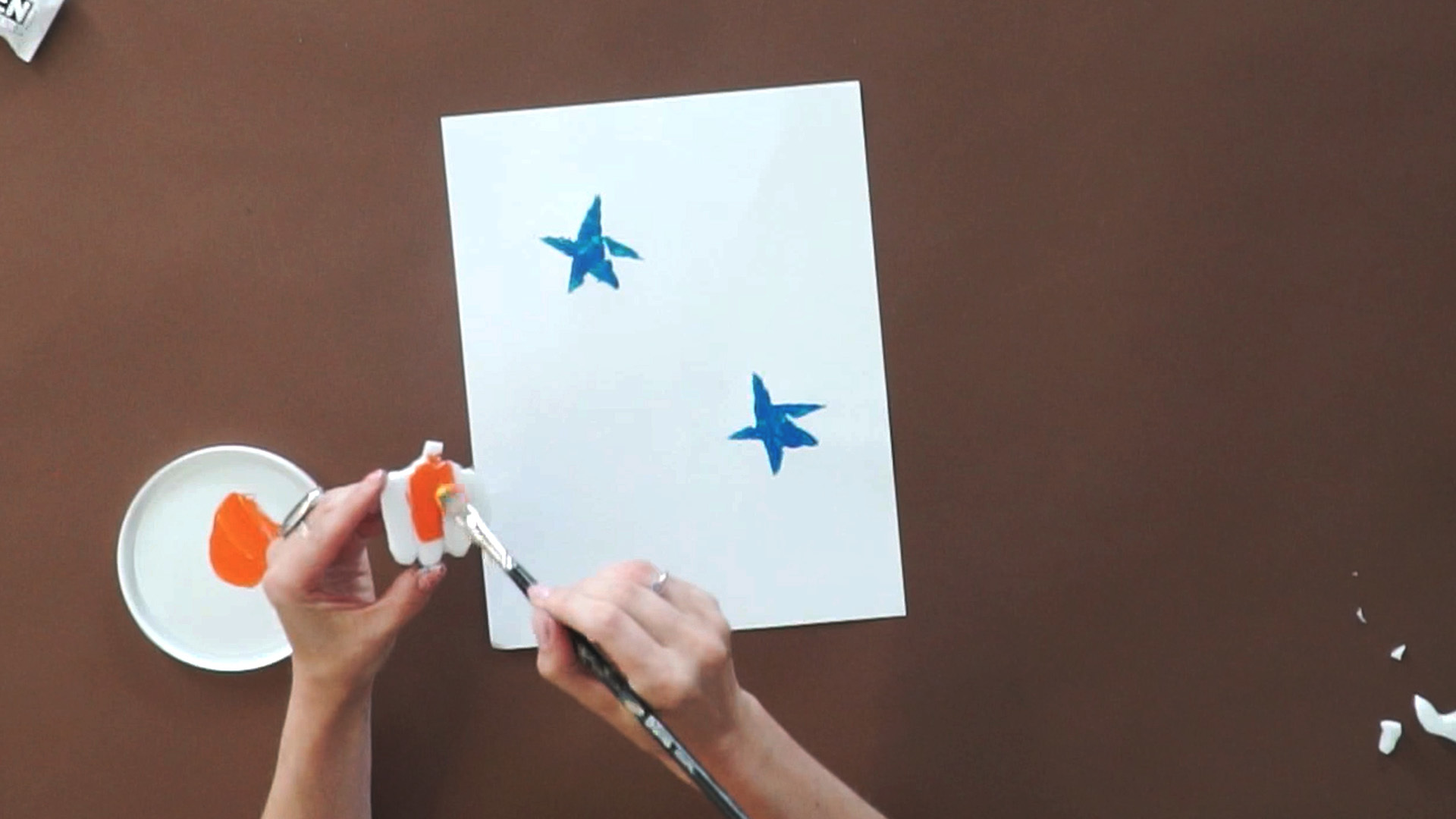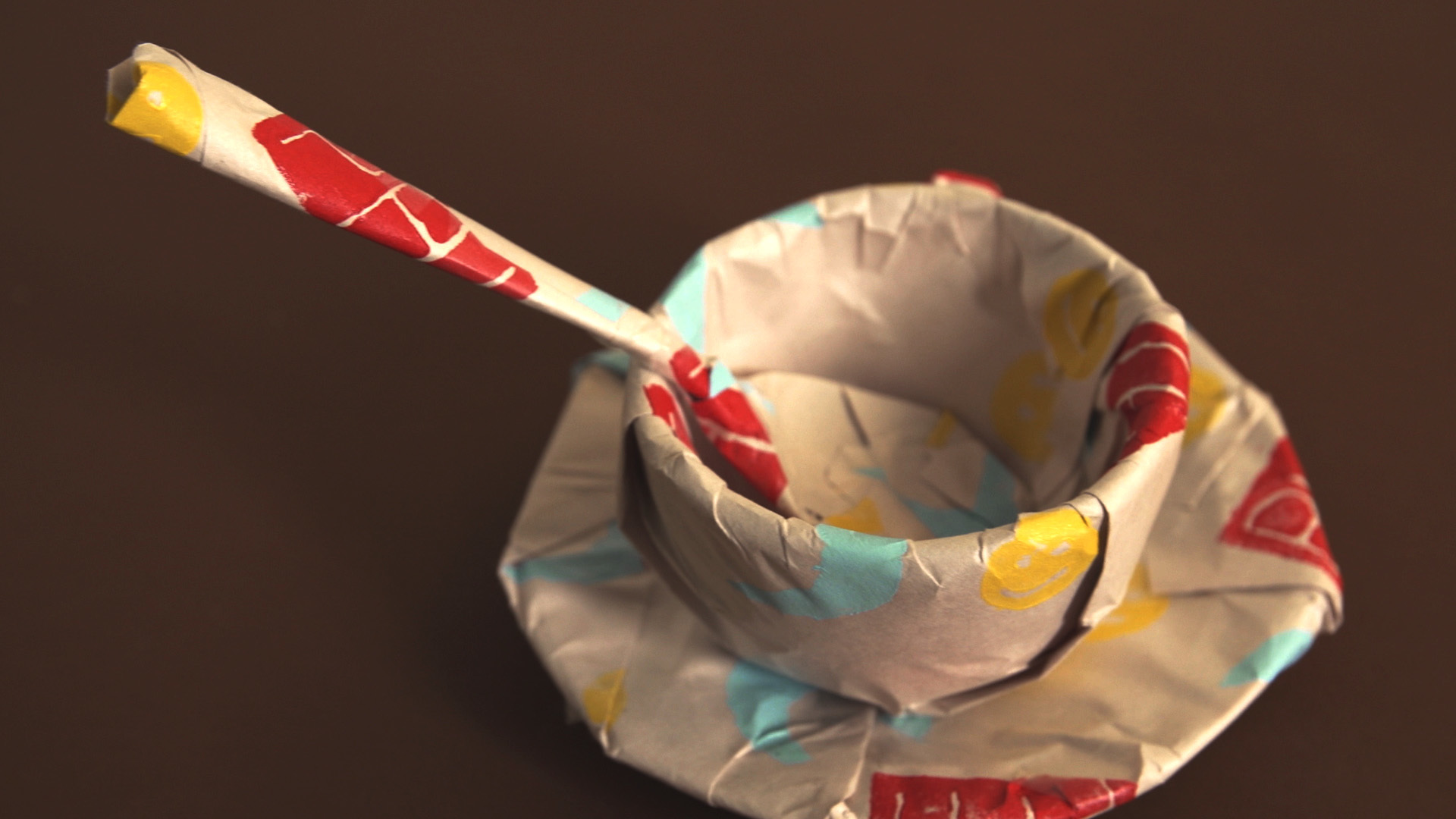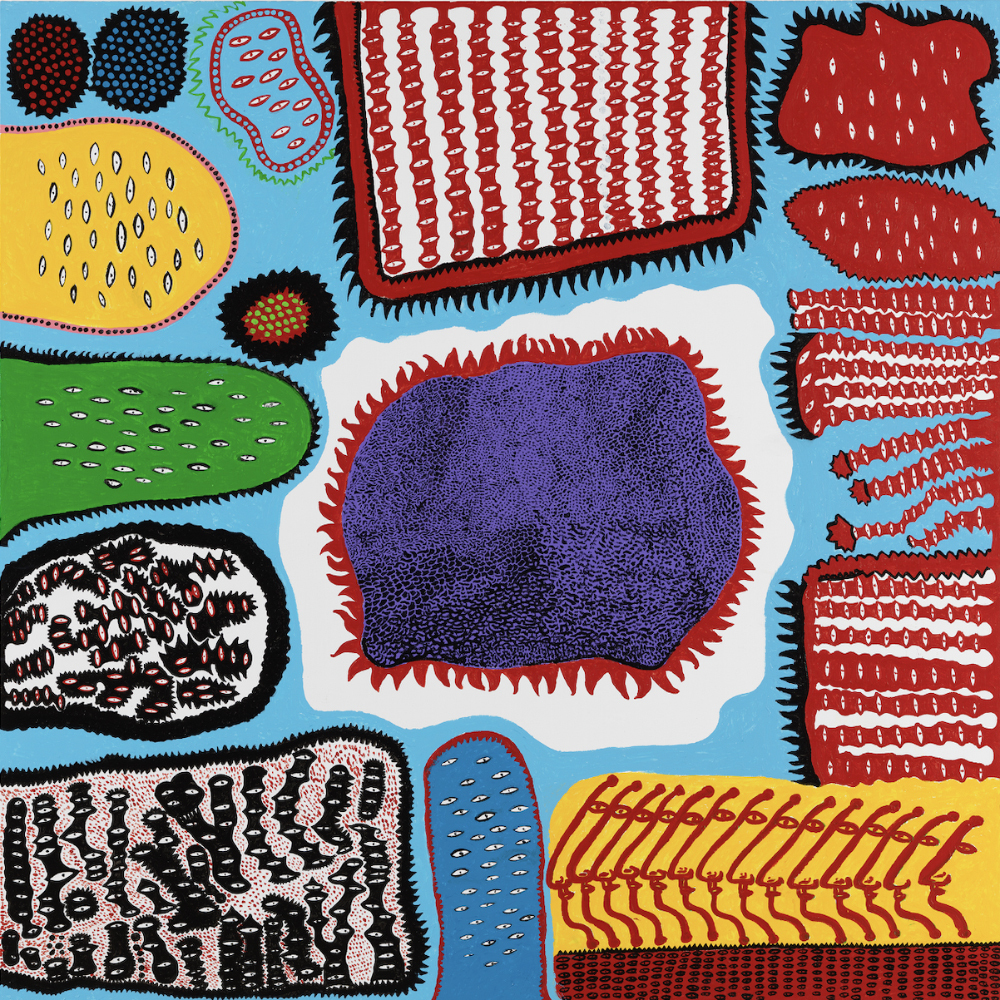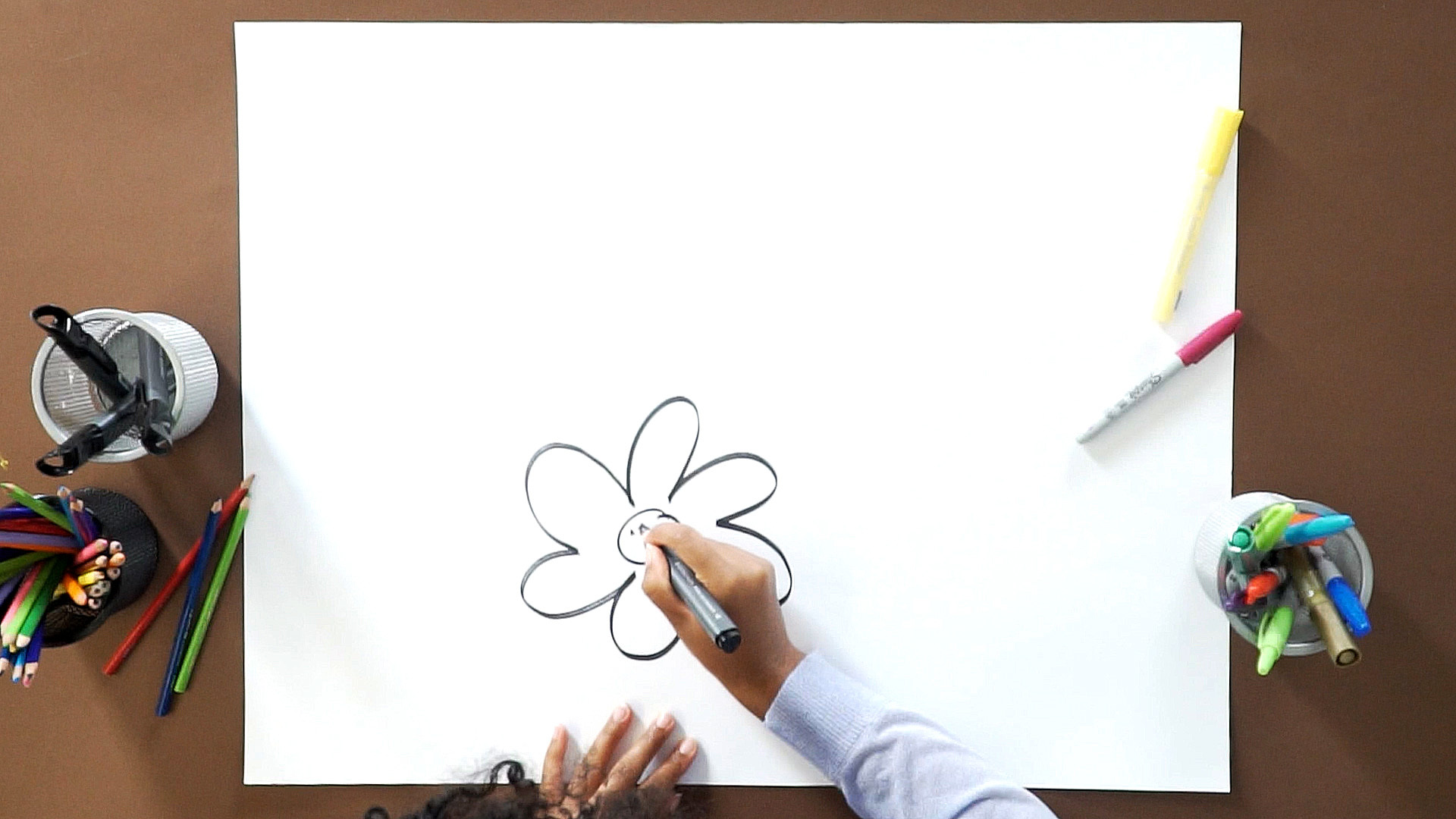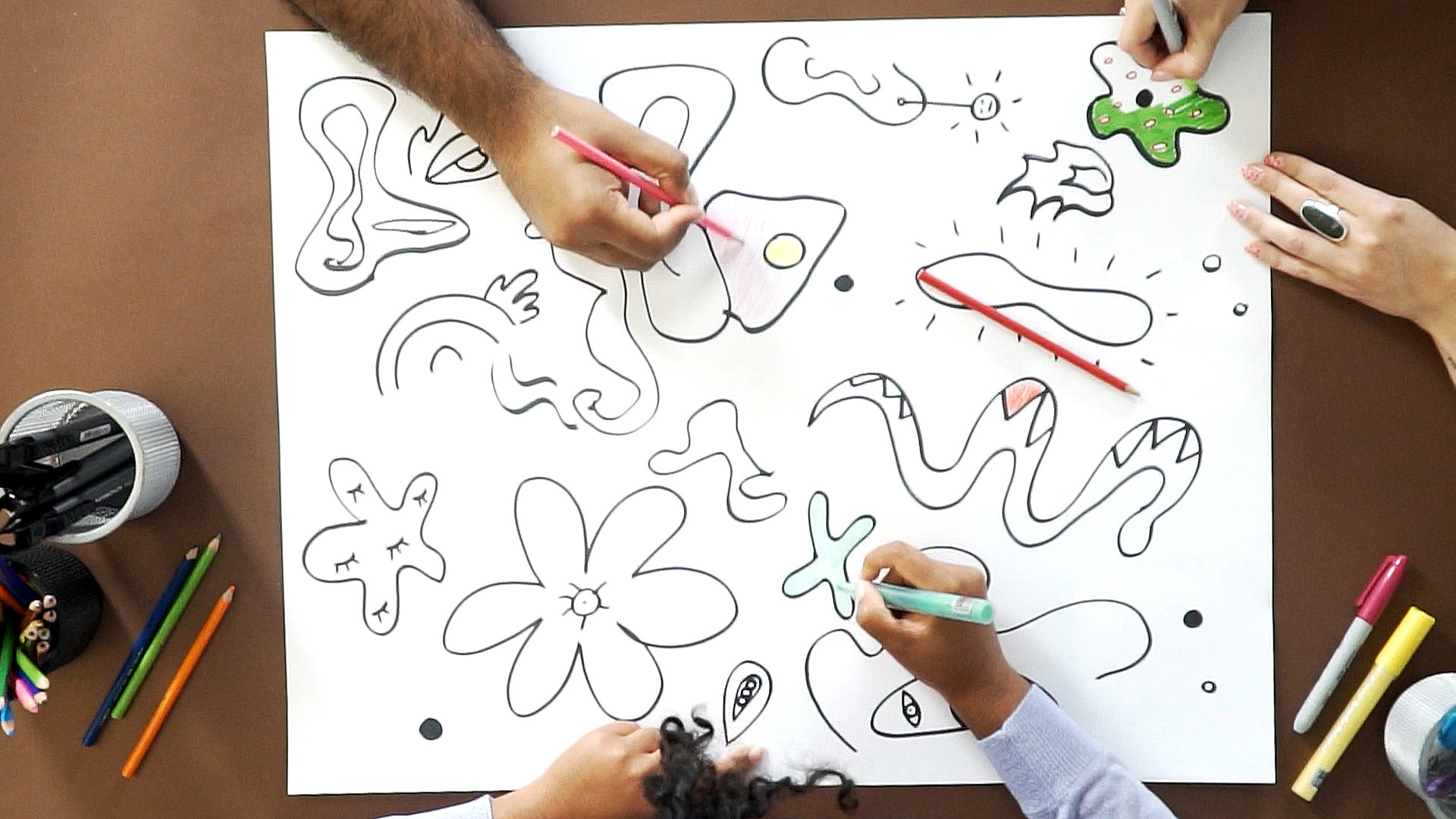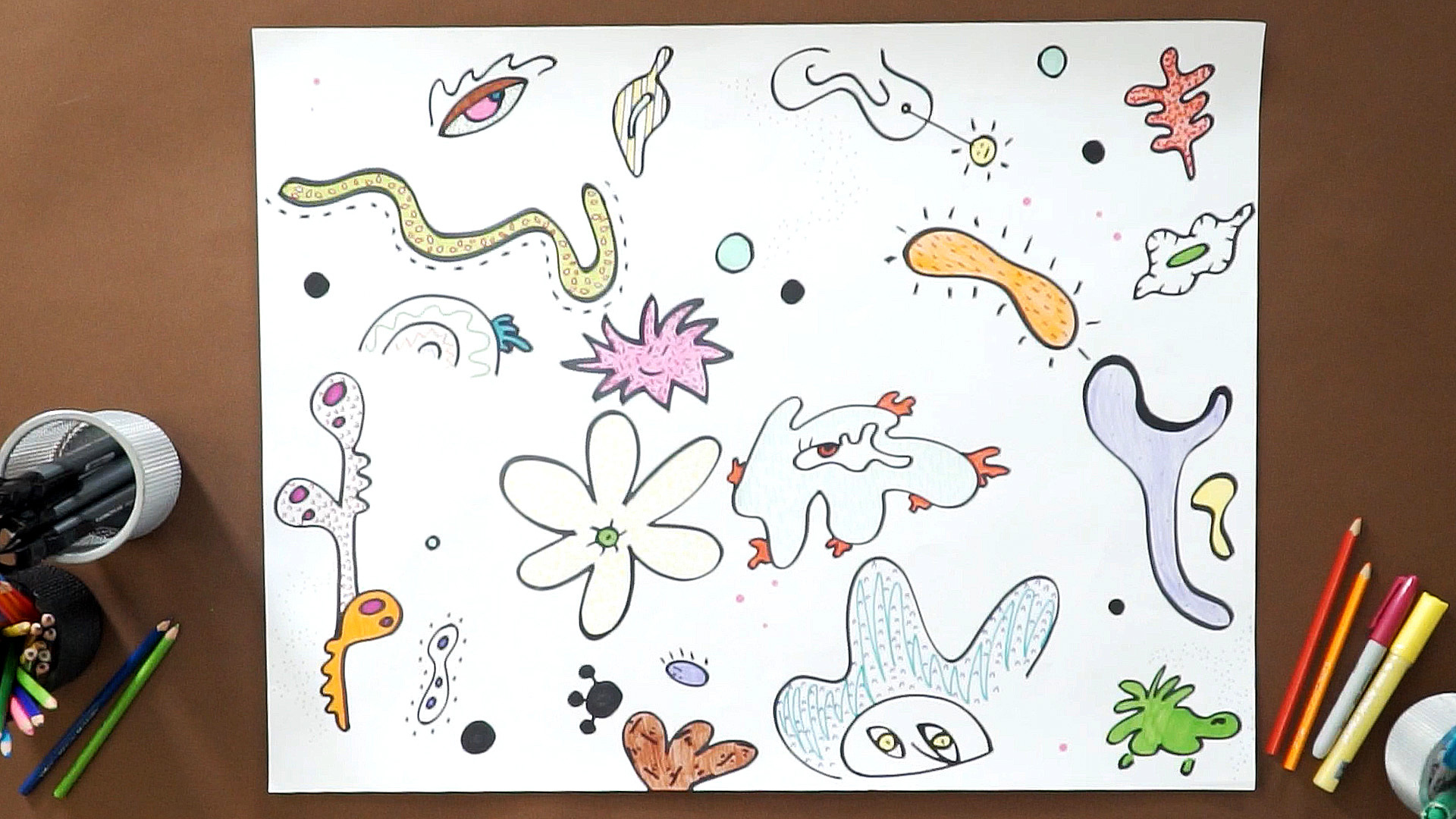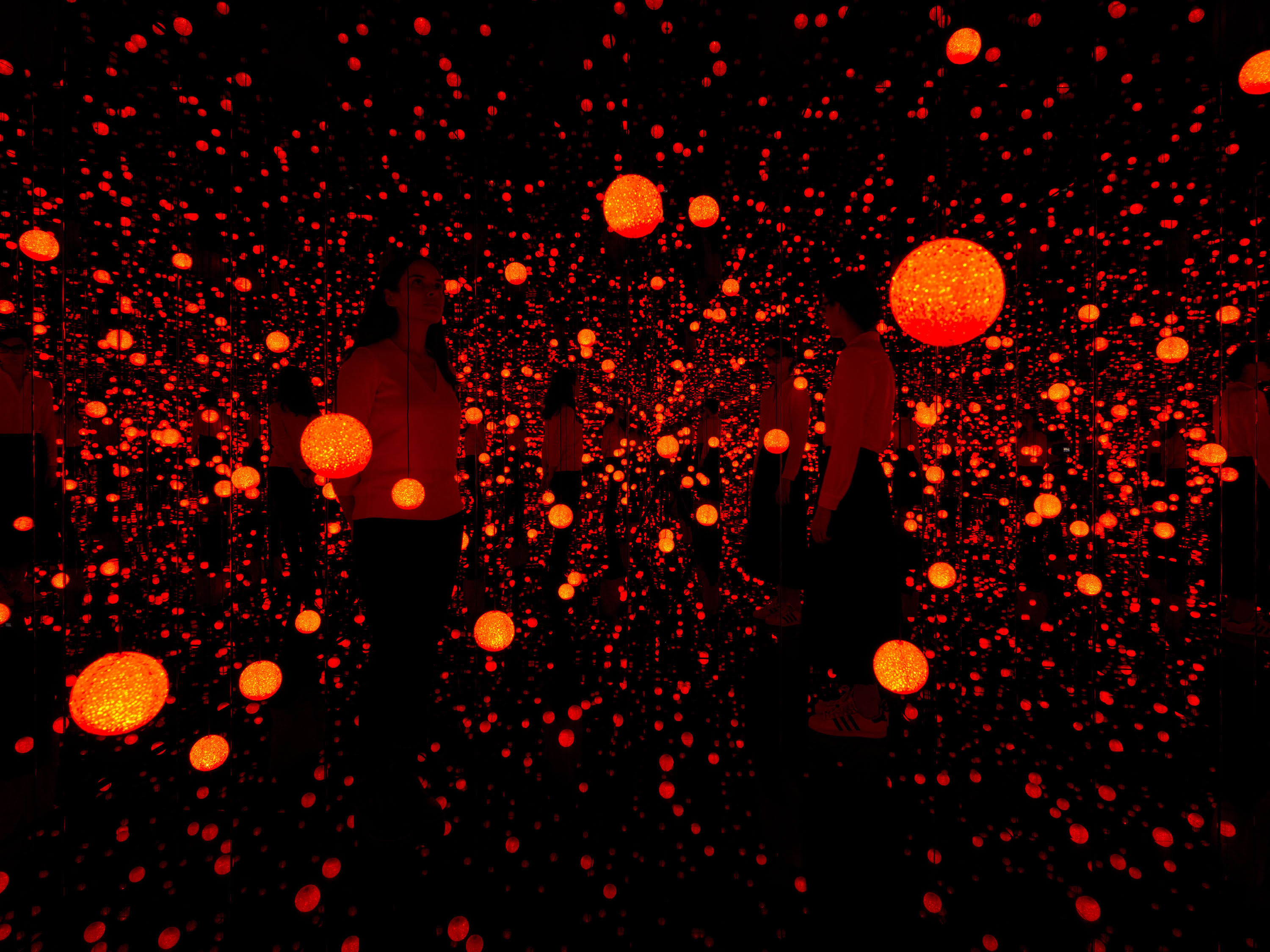The voices of pumpkins: write a poetic collage
Theme: Nature
Materials: found organic or recycled materials (see below), large sheet of cardstock or cardboard, paper, markers, scissors, glue.
Yayoi Kusama is deeply fascinated with objects that she finds beautiful or peculiar, such as macaroni shells, flowers, and pumpkins. She explores her interest in these objects by making several art pieces inspired by them, including sculptures, paintings, and poetry.
In this activity, we are going to combine these inspirations to create a sculptural poem made of found materials.
Part 1: Making the collage
Step 1: Collect the materials needed to build your collage. These can either be organic materials you scavenged from outside (leaves, fresh or dried flowers, twigs, etc.) or scrap materials from your recycling bin (paper, cardboard, egg cartons, plastic, etc.).
Step 2: Set down a large piece of cardstock/Bristol board/cardboard or any kind of thick paper to serve as the base of the collage.
Step 3: Use your scissors to cut your materials into the shapes and sizes you like. These can be as big or small as you want.
Step 4: Arrange your materials on your base and move them around until you are happy with their placements. Remember that you can layer materials on top of one another. When you are satisfied, glue down the pieces onto the base.
Part 2: Composing the poem and incorporating it within the collage
Step 5: Once you are finished with the collage, it is time to write your poem. Pick something from nature that fascinates you. For Kusama, this was pumpkins and flowers, but you can choose anything, such as a plant, an animal, a body of water, or even the weather. Write a poem as if you were the object or element that you chose. If your natural element could speak, what would it tell us? Your poem doesn’t need to be very long — between 2 to 5 lines is fine — and doesn’t have to rhyme. Using a marker, you can write the poem directly onto your collage or you can write it across several small pieces of paper which you can then glue onto the collage.
